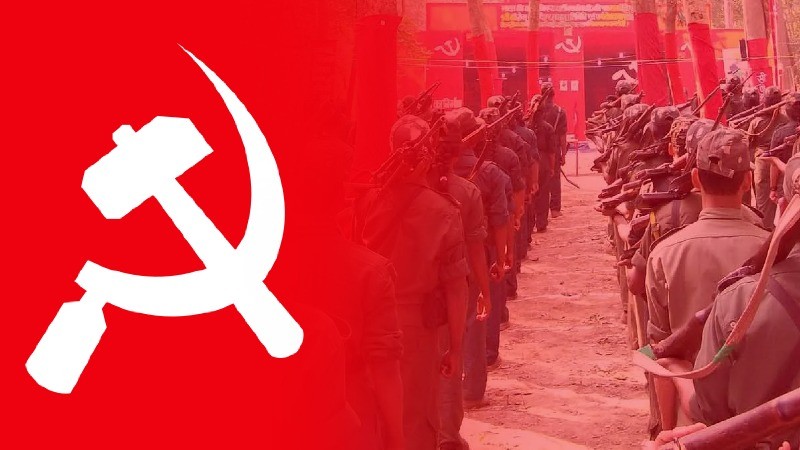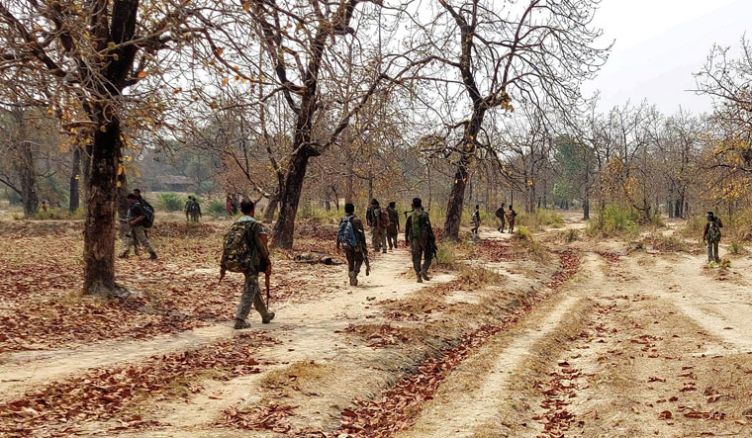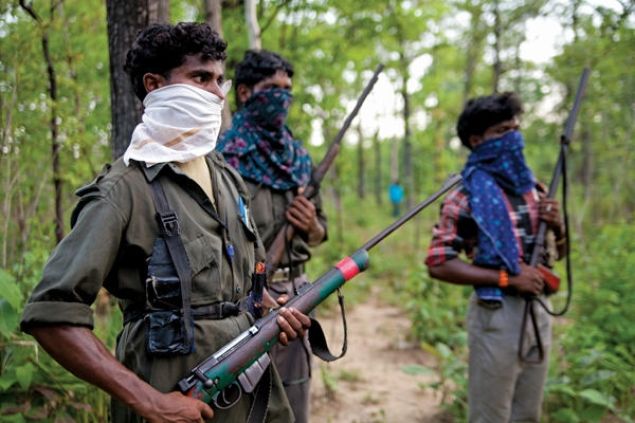
In its efforts to eliminate Naxalism from India by 31st March 2026, the Modi Government is leaving no stone unturned. The latest one is Operation Black Forest, which has been acclaimed as one of the most successful anti-Naxal actions in recent years. In the gun battle, 27 Maoists were killed, including CPI (Maoist) General Secretary Nambala Keshav Rao, aka Basavaraju. It led to the surrender of 84 Naxalites, and 54 were arrested[1].
According to PTI, over 200 Maoists have been killed in separate encounters by the security forces in Chhattisgarh so far this year. Out of those killed, 183 were from the Bastar division alone, from districts of Bijapur, Narayanpur, Dantewada, and Kondegaon. With rising encounters and operations in the Naxalite state, the question is: Will this be the end of Naxalism or A shifting stride towards Urban Naxalism? Moreover, if both the Government and the Naxalites strive for 'the rights and entitlements of local communities of the region', where do the differences lie?
 Maoist troops gather in Kerala (Image source: The London Post)
Maoist troops gather in Kerala (Image source: The London Post)Left-wing Extremism (LWE) or Naxalism, one of the longest insurgencies in the world, has killed thousands of rebels as well as innocents in Central, Eastern, and Southern India. Its origin dates back to 1967 in the Naxalbari village of West Bengal, where communist rebels started a violent revolt against landlords[2].
The emergence was inspired by 'Maoist ideology', where they want to establish a 'people's government' through armed revolution. The first leaders were dedicated followers of the writings of Karl Marx, Vladimir Lenin, and Mao Zedong, among other thinkers. By 1970, the Communist Party of India (CPI- Marxist Leninist) was formed, further to CPI (Maoist) in 2004.
Today, they engage in an armed uprising and run parallel governance structures. They are particularly against the authorities and security forces (Khakee, Military, and Zamindars), for which they also target public infrastructure and democratic institutions[2]. With their ambush tactics and guerrilla warfare techniques, the Naxalites can operate easily under the radar with an efficient network and movement.
 The Red Corridor trail seems to be shrinking, as now, there are only 6 most Naxalite-affected districts, with 6 Districts of Concern, and 6 Other LWE-affected areas (Representation Image from Reuters)
The Red Corridor trail seems to be shrinking, as now, there are only 6 most Naxalite-affected districts, with 6 Districts of Concern, and 6 Other LWE-affected areas (Representation Image from Reuters)
From Naxalbari, the Naxalite movement spread primarily towards the "Red Corridor" in Chhattisgarh, Jharkhand, Odisha, Maharashtra, Kerala, West Bengal, Madhya Pradesh, and parts of Andhra Pradesh and Telangana. Left-wing extremism exists in:
Naxalism-affected districts: Six major districts in Chhattisgarh (Bijapur, Kanker, Narayanpur, Sukma), Jharkhand (West Singhbhum), and Maharashtra (Gadchiroli) are affected by naxalism[2].
Districts of concern: Andhra Pradesh (Alluri Sitaram Raju), Madhya Pradesh (Balaghat), Odisha (Kalahandi, Kandhamal, and Malkangiri), and Telangana (Bhadradri-Kothagudem)[2].
Naxalism was caused in India primarily because of landlessness among marginalized sections, further exploitation by landlords, and agrarian distress due to a lack of a proper land reform system. The neglect and disappointment pushed them into poverty and economic inequality. It was when their lands were snatched away, and they had to face the atrocities of public servants and security forces, that they chose arms and revolt against the authority.
The insurgents demand fulfillment of the primary needs and rights of the marginalized and downtrodden of society, with a speedy governance. Wanting a say in the mainstream, with segmented schemes and policies for them, where skilled training is provided, and there is uniformity in the society.
 3% of Maoists surrendered between 2018-19 to 2020-21 in Chhattisgarh (Image source: ANI)
3% of Maoists surrendered between 2018-19 to 2020-21 in Chhattisgarh (Image source: ANI)
The Government of India has been combating Naxalism since 1971, with security operations like Operation Steeplechase (1971) and Operation Green Hunt (2009), development programmes, infrastructural projects, and rehabilitation measures. From 2015, a decisive strategy has been adopted against Left-Wing Terrorism, with a National Policy and Action Plan and several key initiatives over the years. In 2014, 126 districts of 10 states were the most affected LWE areas, the count has now reduced to 12 in 2025[2]:
The establishment of the rule of law and the stoppage of violent activities in areas affected by Naxalism, at the same time, aiming to ensure quick compensation for the loss in development-deprived areas due to the revolts and movements.
For security, there are the Central Armed Police Forces (CAPFs), India Reserve (IR) battalions, Counter Insurgency and Anti-terrorism (CIAT) schools. For intelligence, assistance, and training, there are the Central Police Organizations, Bureau of Police Research and Development, with Inter-State Coordination.
Earlier, it was tough for the Government to get into the deeper terrains of the jungles of Chhattisgarh, but with technological advancements such as the use of forest drones and security cameras, along with intense forest clearing, they can strike in rebel-occupied territories and hide-outs.
There is an implementation of major Center-sponsored schemes in the naxal-prone regions. Under the umbrella scheme, 'Modernization of Public Forces', the Government is carrying out:
Security Related Expenditure (SRE) scheme: For reimbursement of security-related expenditure in LWE-affected districts and those having extensive monitoring.
Special Center Assistance (SCA) to fill the gaps left in public infrastructure and services.
Special Infrastructure Scheme (SIS) provides funds to strengthen the security forces and special intelligence teams deployed in the region.
Civic Action Programme (CAP): Aims to establish personal interaction between the Security forces and the locals.
Apart from these, there is, Scheme for Fortified Police Stations, the Assistance to Central Agencies for LWE management scheme, and programmes like the Tribal Youth Exchange Programme and the Aspirational Districts Programme, among others.
Several projects for telecom connectivity, road connectivity, financial inclusion, skill development, and education are also sponsored in the regions.
The Government is carrying out various rehabilitation measures for the tribals and Naxals, through which they can be brought to the mainstream. Many insurgents have even surrendered and left the path of violence.
 It's not the Naxal killing that will bring peace and development in the valley, but proper rehabilitation
It's not the Naxal killing that will bring peace and development in the valley, but proper rehabilitation The security agencies have neutralized hundreds of Naxals till now, many have been arrested, and a significant number have surrendered. So far this year, 164 Naxals have surrendered. In 2024, the count was 884, while in 2023 it was 1,045. For the first time in three decades, the number of casualties reported due to LWE dropped below 100[2].
But now, the Government has adopted a 'Surrender cum Rehabilitation' approach for Naxalites, where they are encouraged to get in the mainstream, and never return to the movement[3]. Rehabilitation is an acceptable and peaceful solution that ensures peace and development in LWE-affected areas.
Those who surrender are assisted through various surrender/rehabilitation schemes after being scrutinized by the Screening cum Rehabilitation committee[3].
According to PTI, the new policies, such as the Chhattisgarh Naxal Surrender/Victim Relief and Rehabilitation policy, are aimed at providing free education and healthcare facilities, higher compensation (in the form of agricultural or residential land, and if not land then financial assistance), and even job opportunities to the victims of Naxal violence.
There is a primary focus on skill development and education because, with proper training, these adrift groups can get back to normalcy. As many as 48 Industrial Training Institutes (ITIs) and 61 Skill Development Centers (SDCs) are functioning in LWE-affected districts[2].
The surenderee is provided with a fixed stipend for a maximum of 3 years, only if he doesn't find employment in Government institutions. He also avails the benefits of a fixed deposit in his account.
LWE-affected districts also have quality education now, especially the tribal blocks. At present, there are 178 Eklavya Model Residential Schools (EMRS) functioning[2].
Around 1.5 crore people in LWE-affected areas are benefiting from the personal amenities provided by the Government, under schemes like 'Dharti Aaba Janjatiya Gram Utkarsh Abhiyan'[2].
As mentioned above, the surrenders have had a dramatic increase. There have been a few success stories as well, in Bastar and mainly in Andhra Pradesh, because of the model approach they had. Proving every time that it's not force or violence that will bring peace in these territories, but rather proper rehabilitation for peace and development.
To what is visible, both the Government as well as the Naxalites want 'betterment of the poor', but are they really on the same page?
Corporate system: The Naxalites are against the Government's efforts of trying to establish a corporate culture, bring in new investments, and provide infrastructural opportunities. Operations to extract natural resources like timber, coal, iron ore, and other minerals are carried out on a large scale in the Chhattisgarh belt. Adani Group and Jindal Steel are the major companies that are currently based there.
"What difference does a six-lane project or an Adani coal project make for them if their basic needs aren't satisfied? If their lands are taken away, their homes are displaced, with no skilled training, and they have to reach out to corrupt officials, how shall they survive?" says a source.
Parallel governance: A major issue is parallel governance. Naxal groups have established their governance structures for local grievances in their territories, where they are the protectors, lawmakers, and even deliver verdicts. And there can be no two Governments functioning in a State.
According to the source, the Naxalites have sent as many as seven proposals for a peace talk with the authorities in five months. But there has been no response, instead, the Government is on a 'wipe out' mission with its zero tolerance approach against Naxalism.
Urban Naxalism: Also, the fact that recruits are appointed now and then, in the efficient network trail of the Red Corridor, will the Government be able to eliminate LWE? When it is being wiped out from the forests and rural areas, it is emerging in the Urban centers as 'Urban Naxalism'. Doctors, engineers, and every other common man running errands for their family, who seem to be just like us, might be a part of this trail, serving as a mediator to the Naxalites, or likely pick up a weapon in their hands someday.
The rehabilitation measures have to be effective and efficient, so that the insurgents never turn back to the Maoist path ever again. Also, ensuring that the benefits and hopes for a 'life like that' are not simply promises, the results shall be visible on the ground, not merely on paper.
There has to be a permanent solution to this, with long-term peacebuilding between the Naxalites and authorities. The rights and demands of tribes, as well as those disappointed with the Government, shall be discussed. They shall ensure a resolution of the conflicts with land reforms and a strategic, inclusive development in LWE regions.
Seeing the security operations by the Government, it might seem that we have got rid of Naxalism, while at the same time, there might be a new Naxalbari movement in the making, when nothing is going on. The insurgents will have to leave their violent ways and come forward in the mainstream to discuss their issues. The authorities will also have to gain the trust of the locals, as well as interact with the insurgents. Initiatives and efforts from both sides can only help us combat Naxalism.